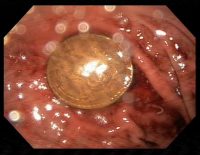World Thalassemia Day 2020: Thalassemia is a preventable blood disorder by staying committed to long-term treatment, says Dr Sakthivel Murugan

Treatment of thalassaemia is largely dependent on supportive care with blood transfusion, iron chelation and lately hematopoietic stem cell transplantation
What is Thalassemia?
Thalassemia is a group of inherited blood disorders passed from parents to children through genes. It is a disease of the blood makes fewer healthy red blood cells and do not produce enough haemoglobin, the protein that carries oxygen throughout the body. Increased destruction of the red cells in the blood causes hemolysis. The clinical symptoms include fatigue, weakness, pale skin, slow growth, abdominal swelling and dark urine (due to high iron levels). Treatment of thalassaemia is largely dependent on supportive care with blood transfusion, iron chelation and lately hematopoietic stem cell transplantation.
What causes Thalassemia?
Haemoglobin molecules are made of two alpha, two beta protein chains and a heme molecule. DNA mutations in genes coding for the alpha and beta chains affect their structure and thus a normal function of the protein. Primarily two genes are involved in making the alpha chain (HBA1 and HBA2 genes) and one gene (HBB gene) for the beta chain. Each individual has two copies of each of these genes, one inherited from their father and other from their mother. Mutations in both the copies of genes in an individual cause reduced or absent globin chain synthesis resulting in the clinical phenotype. For example, two defective gene copies of HBB causes Beta thalassemia major with a moderate-severe condition or intermedia with mild features. A person who inherits only one defective gene from a parent (the other gene copy being normal) is likely to be an asymptomatic carrier with or without mild symptoms (thalassemia minor).
Different types of Thalassemia
Thalassemia types denoted by two things: specific part of haemoglobin that is affected (usually either “alpha” or “beta”), or the severity of thalassemia, which is noted by words like trait, carrier, intermedia, or major. Haemoglobin is made of two different parts. When thalassemia is called “alpha” or “beta,” this refers to the part of haemoglobin that isn’t being made. If either the alpha or beta part is not made, there aren’t enough building blocks to make normal amounts of haemoglobin. Low alpha is called alpha thalassemia(HBA1 and HBA2 genes) and low beta is called beta-thalassemia (HBB gene). Recently, based on clinical management thalassemia intermedia (TI) is referred to as non–transfusion-dependent thalassemia (NTDT) and thalassemia major (TM) as transfusion-dependent thalassemia(TDT) based on their requirement of regular blood transfusions to survive.
Facts and figures in India
Approximately 15 million people worldwide are born with thalassemic disorders. It is reported that there are about 240 million carriers of β-thalassemia worldwide. The first case in India was reported in 1938 and counts for approximately 30 million with a mean prevalence of 3.3%. Over 1,00,000 thalassaemia majors under blood transfusion every month. Around 1,00,000 patients across the country die before they turn 20 due to lack of access to treatment. Every year 10,000 children with thalassaemia major are born in India.
Could we prevent thalassemia?
It is a major healthcare burden globally, especially in a developing country like India. Over the past decade, our knowledge of the clinical diagnosis and management of thalassemia has progressed extensively. There is also hope that it will eventually be completely curable, although this is probably a long time in the future. Substantial progress has been made developed countries using the tools of molecular genetics, however, this may not be completely true in the case of developing countries primarily due to financial constraints and lack of awareness. The disease burden affects the economy of the families, wherein regular blood transfusions and iron chelation therapy may not be affordable by all. The less severe forms also carry substantial burden including splenomegaly, iron overload, skeletal effects, and cardiopulmonary disease, requiring continued medical treatment and monitoring.
Creating awareness for both public and medical fraternity on the disease, its inheritance and screening options will help curb its spread. Family history of Thalassemia is one of the important risk factors to consider, as it is a genetic disease. If there are known cases in families of either or both the partners, counselling followed by genetic testing can be done to determine the risk both manifesting the disease and also the probability of passing on the defective thalassemia gene copy to your children. The knowledge of molecular pathology also aids in a better prognosis. This genetic information can also be used to make educated reproductive choices including prenatal testing and assisted reproductive technology, wherein the embryos can be screened for the defective gene copies.
In addition individuals from certain ancestry, have a high carrier burden (individuals with one defective gene copy) like African Americans, Mediterranean including Southeast Asian descent, Indians. Awareness about the disease and availability of comprehensive genetic screening especially in high-risk communities and individuals with a strong family history will help reduce the spread of this inherited disease condition. Public health services should also focus on all levels to make the youth aware of the screening process and clarify misinformation and taboos associated with screening for genetic diseases.








Comments